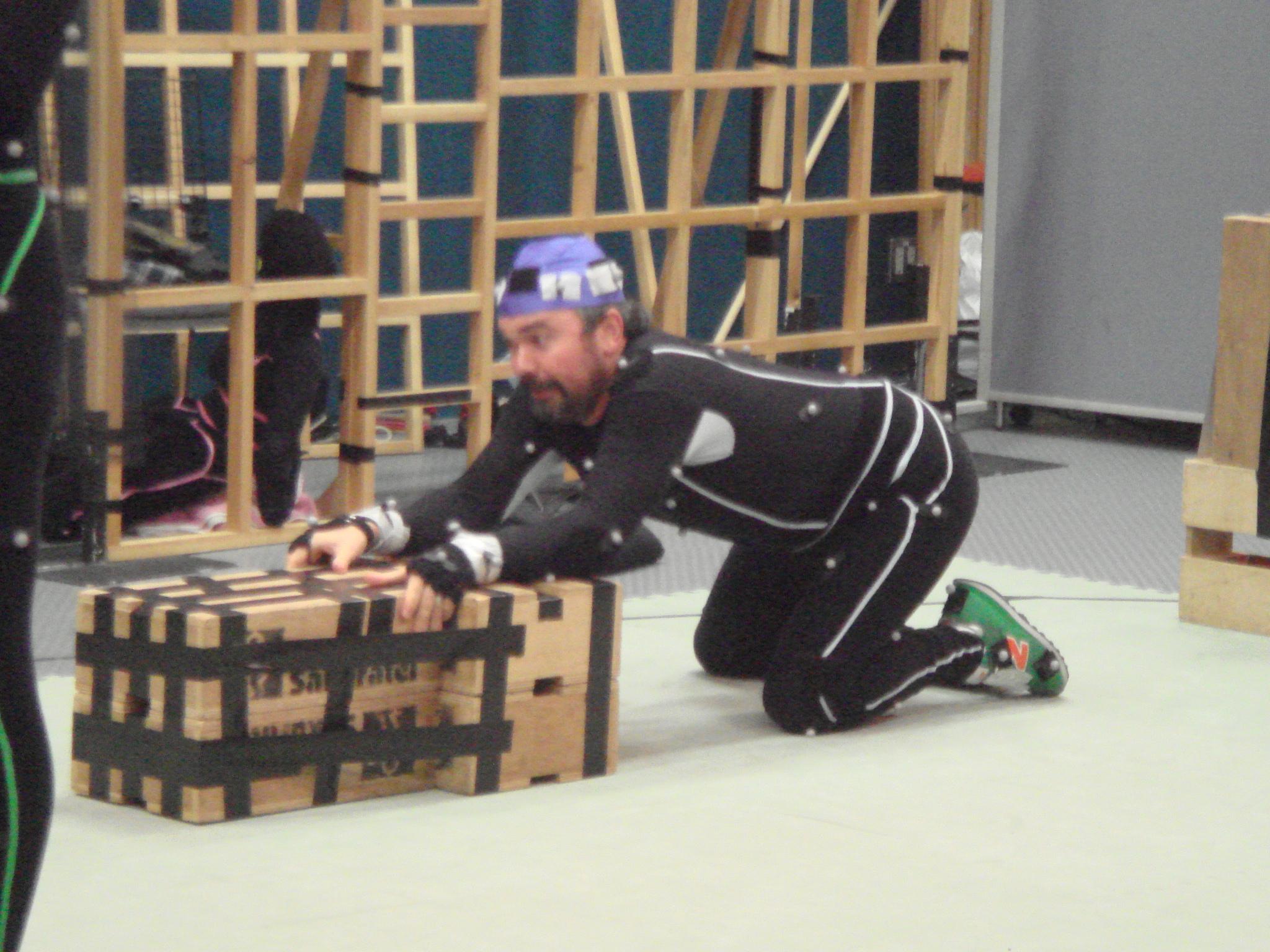Hello everyone. I am Tsuda, in charge of the cutscenes on Bayonetta.
It is these very cutscenes that I’ll be discussing with you today.
…or would like to be discussing, but since we haven’t released the game yet, there is much about the story that I can’t tell you. So instead, I am going to talk to you about what we focused on while creating the cutscenes for Bayonetta.
The first thing you need to make these scenes is a script. For Bayonetta, Kamiya-san wrote the script himself.
I had the same feeling on Okami, but it’s hard to believe that a guy who looks as serious and stern as Kamiya-san does can write such great stories… I guess looks aren’t everything… Of course, Bayonetta is no second best to Okami. It is a great story with laughter and tears. I hope you are all looking forward to it.
So once a script is in hand, we use that to start blocking out the action. Bayonetta, as you may know, is an action game, and the cutscenes take place in the midst of the cataclysmic disasters, or Climax Action, so would having just a bunch of people talking really work out…
This led us to the inevitable conclusion that the action scenes would form the core. This was when we went to Director Yuji Shimomura, who worked on Devil May Cry 3 and 4, to come on board as action director.
His involvement has Bayonetta’s story bursting at the seams with action.
For instance, this line of stage direction in the script:
“BAYONETTA, sensing something is near her, shoots her gaze in the direction of a motorcycle attached to a wall. It is here she encounters JEANNE.”
Became this:
[wpvideo qbGXJg2d]
There is obviously stuff that comes after this; however, just having her ride the bike isn’t that interesting, so the cutscene ended up as you see above.
Of course, the other signature elements of Bayonetta – A modern witch, four guns, and femininity – as well as her signature times, her glasses, and her hair, are all packed into the various action in the cutscenes. I can’t really give you an example, but you are in for a treat.
Once the script and direction were in place, the next step was to turn this into computer data. Since Bayonetta is about human beings, that means we had to use motion capture. But how do we film this crazy situation, or these enemies… There were quite a few difficult problems to overcome…
But anyways, to do motion capture, you need actors! Which means we had to go out and find actors. What is most important is finding people with the right styling, as well as physical characteristics such as weight and height, to play Bayonetta and the other main characters. We took all of this into consideration as we searched.
In Bayonetta’s case, we needed someone over 180cm (about 5’11”) tall… With long limbs… Who is sexy… And can do stunt work…
We realized, “There’s no one like this in Japan!”
So we went outside the country to find out actors!
Auditioning overseas paid off…
“There are people like this here!”
I was truly stunned by how stylish foreign actors are.
But no matter how you cut it, a human being could never being all of Bayonetta’s action to life…
BTW – This is Enzo.

He has a really unique way of moving, and the actor was really well suited to the role. I’m sorry I can’t show you some video…
Another one of the benefits of using foreign actors is that we are able to create scenes that our foreign audience can enjoy without it feeling strange to them as the actors are performing Bayonetta’s lines in the game’s main language, English.
With that said and done, we had captured the data we needed.
We took the data and placed it on the characters, making edits to the motion and adding the camera animation. Camera animation can be a real villain.
Even though we are using CG, if we get too far away from real world camera work, it will end up reeking of CG-ness. It will feel completely unreal. Especially in this game, where the distance and speed at which things move is a world apart from what normal humans are capable of, we are precluded from doing things like tight close-ups of Bayonetta. If we get too caught up in cute camera work, we lose the speed and dynamism we are after. Of course, this changes according to what you are trying to make, but with Bayonetta worked staying conscious of real camera shots like dolly and crane shots, making sure we didn’t lose the dynamic nature of the action scenes, the mid-air battles, or the calamities that strike the world.
Once we had placed in the camera animation for each cut, we would add the lighting and special effects, then tweak them until they were near a point of completion.
Well, that pretty much sums up how we created the cutscenes, a job we are still in the midst of finishing.
Bayonetta isn’t just filled with Climax Action during the gameplay, it is also packed into the cutscenes as well. I truly hope you enjoy them!